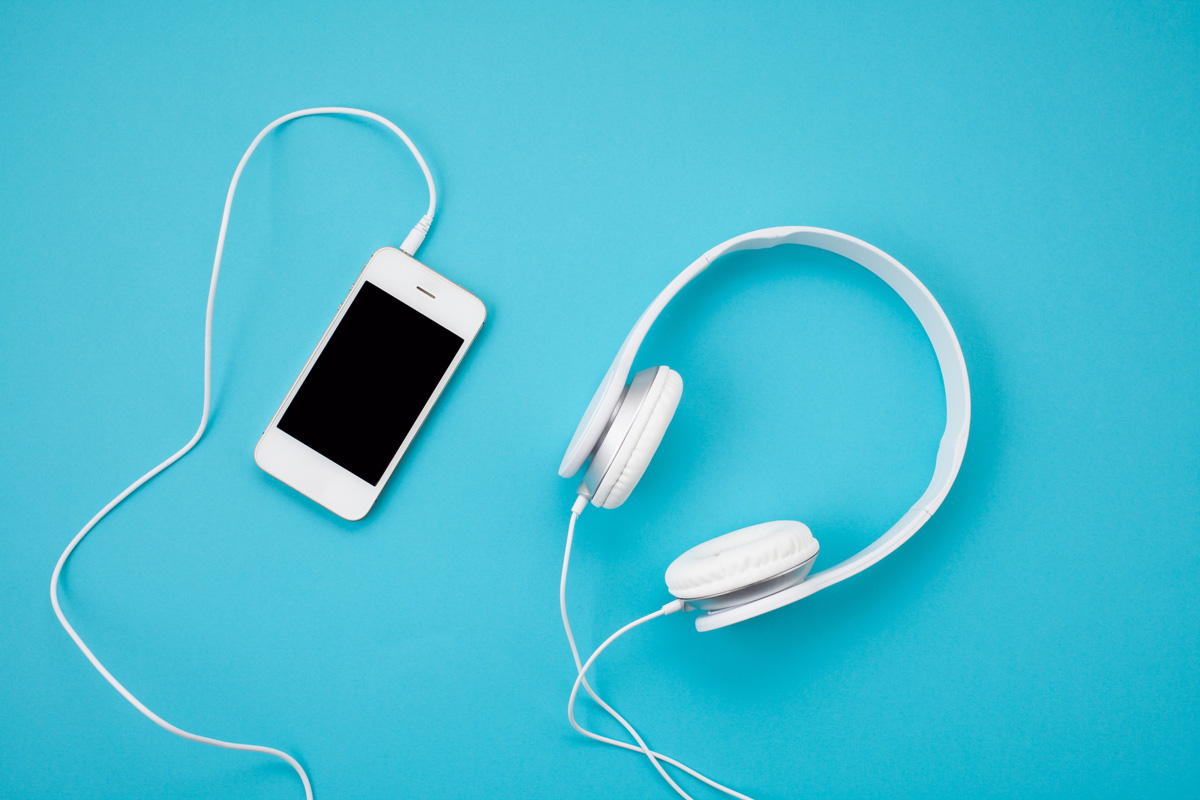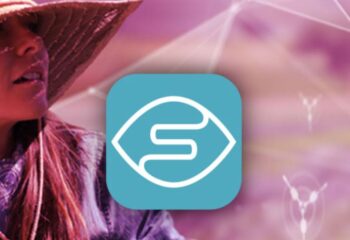How AD Helps You See The Details
Perhaps you’ve noticed the increasing availability of audio description (AD) and descriptive video service (DVS) for movies, theater and TV. This is one of the ways digital technology is boosting accessibility for viewers with vision loss. The visual voice describes the images and fills in the details we might have otherwise missed. It is the great equalizer.

Young woman outdoors with headphones on autumn day
Audio description is a narrative guide subtly slipped into the quiet spaces of the program, its purpose to keep the viewer fully informed. AD is something of an art itself, delivered by trained, skilled professionals, with typically high-quality results.
Access to the visual content through concise descriptions changes the experience completely. The things you cannot see become known: a facial expression, a subtle gesture, a funny quirk.
Audio Description for Movies, Theater and TV
The descriptive track is now embedded into most widely-released movies in the US.
To access the tracks on mobile devices or computers, it’s as easy as turning on Audio Description in the device setting. For example on an iPad, AD is turned on in the Accessibility settings under “Media”. More movie theaters are providing AD listening devices for any guest wishing to use them, and there is theater personnel on hand to assist.
Getting access to AD on a traditional television is a bit more complicated, and dependent on the TV, the cable provider, and even the region. For TV, our best advice is, settle in for a long call with technical support, it will prove worth your while.
Although it is lovely to have a live, professional audio describer at your service, it is not nearly as efficient as digital technology. There is a tremendous freedom involved in knowing an audio track is readily available for Broadway shows, museums and movies. Even better when the technology is accessed from your own personal device.
Broadway has the Galapro app for iOS and Android, which syncs the audio description instantly to the live performance.
There is an app for movies called Actiview, also designed to sync automatically and getting excellent reviews on the App Store. Rest assured, we will be seeing a great deal more development in apps of this nature for all arts and entertainment.
The Audio Description Project: A Comprehensive Resource
The progress we get to enjoy today is the result of inclusive technologies aligning with advocacy efforts years in the making. One of the organizations that stepped into a leadership role in AD is the American Council of the Blind (ACB).
The Audio Description Project (ADP) “is designed to promote and advocate for the use of high-quality audio description in television, movies, performing arts, museums and educational materials,” Joel Snyder, PH.D, the project’s director told us in an email. He added, ADP’s goals “are to build awareness of audio description among the general public as well as its principal users, people who are blind or have low vision.”
Started a decade ago, the scope of the project’s work include a Biennial ADP Conference, outreach and education, training courses and mentoring programs for professionals. And, we were pleased to learn there are even ADP Awards. The ADP website provides a comprehensive reference and resource for all things AD.
Audio Described Program Listings are published for:
- AD Service Providers
- International
- Museums and Parks
- Performing Arts
- TV
- DVDs
- Movies
- Streaming Services
The ADP website is intensive, so take some time to browse. There is a Master List with over 2,000 entries.
If you’re wondering about a specific program, go straight to the website’s search field.
And should you have a question or need assistance, click on the link to “Contact Webmaster” on the bottom of every page; his name is Fred Brack and we found him very responsive and extremely helpful.







